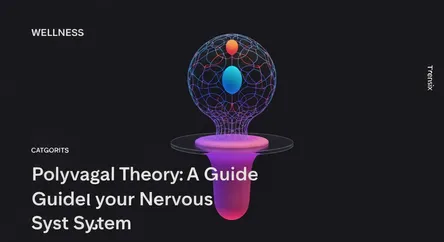Wellness
Polyvagal Theory: A Guide to Your Nervous System

Discover how polyvagal theory explains the connection between your nervous system and your feelings of safety, stress, and social engagement.
What is it?
Developed by Dr. Stephen Porges, the Polyvagal Theory provides a new understanding of our autonomic nervous system (ANS). It proposes that the ANS has three, rather than two, distinct pathways that dictate our responses to the world. These are the ventral vagal (social engagement system, feeling safe and connected), the sympathetic (fight-or-flight mobilization), and the dorsal vagal (shutdown or freeze response). A key concept is "neuroception," our nervous system's subconscious ability to detect cues of safety or danger in our environment, which then triggers one of these states.
Why is it trending?
The theory is gaining massive traction in mental health and wellness because it offers a more compassionate and nuanced framework for understanding trauma, anxiety, and stress. It moves beyond a purely psychological view, providing a biological basis for why we react the way we do. Therapists, coaches, and yoga instructors are increasingly incorporating its principles to help clients understand and regulate their nervous systems. This mind-body approach empowers individuals by explaining that their responses are physiological, not a personal failing.
How does it affect people?
Understanding your polyvagal state can be transformative. It helps people identify triggers and recognize why they might feel anxious, disconnected, or shut down. By learning techniques like deep, slow breathing, humming, or seeking positive social connection, individuals can consciously stimulate their ventral vagal nerve. This action helps shift them out of a fight-or-flight or freeze state and into a state of safety and calm, improving emotional regulation, resilience, and their ability to connect with others.